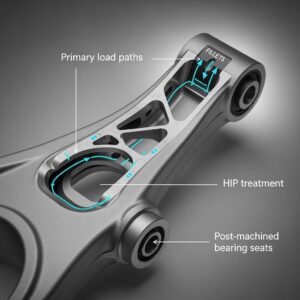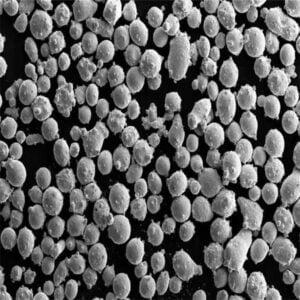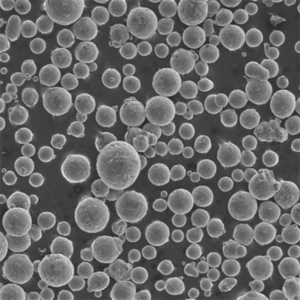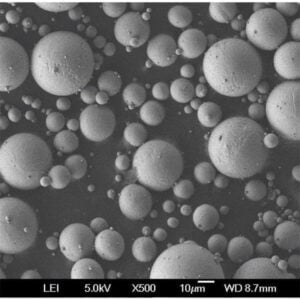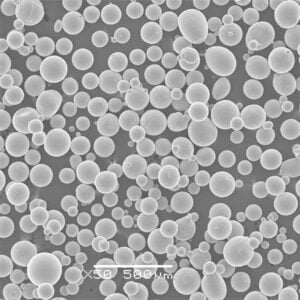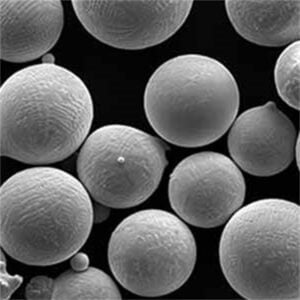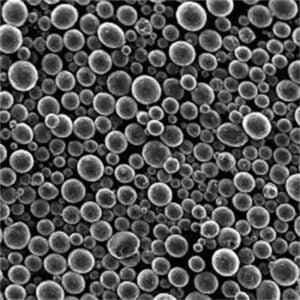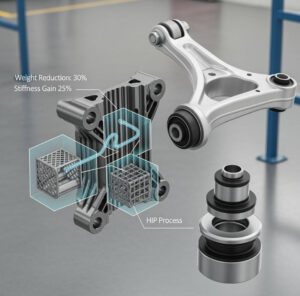溶射の総合ガイド
目次
溶射 は魅力的で複雑なプロセスであり、数多くの産業用途に不可欠です。この記事では、溶射の複雑さを深く掘り下げ、詳細な概要、特定の金属粉末モデルに関する議論、さまざまな用途、利点、制限の分析を提供します。また、溶射の仕様、グレード、規格、供給業者と価格についての洞察、そして便利なFAQセクションで締めくくります。
溶射の概要
溶射は、溶融または加熱した材料を表面に吹き付けて保護層または装飾層を形成するコーティングプロセスである。この技術は、汎用性が高く、表面特性を改善する効果があるため、製造業、自動車、航空宇宙、その他多くの産業で広く使用されています。
溶射とは?
溶射では、粉末やワイヤーを炎やプラズマ・ジェットに送り込み、溶融粒子の流れを作ります。その後、これらの粒子はコーティングされる表面に押し出され、そこで急速に固化し、耐久性のある層を形成します。このプロセスは、金属、セラミック、プラスチック、複合材料など、さまざまな材料のコーティングに使用できる。
溶射を使う理由
溶射にはいくつかの利点がある:
- 耐摩耗性の向上: 表面の耐摩耗性を大幅に向上させる。
- 腐食保護: 優れた防錆効果を発揮。
- 断熱: 断熱用途に有効。
- 電気伝導率: 導電性コーティングに使用できる。
溶射の主要プロセス
主な溶射プロセスには以下のものがある:
- 火炎スプレー
- プラズマ・スプレー
- 高速オキシ燃料(HVOF)溶射
- コールドスプレー
- 電気アーク溶射
これらのプロセスにはそれぞれ独自の利点があり、特定の用途に適している。
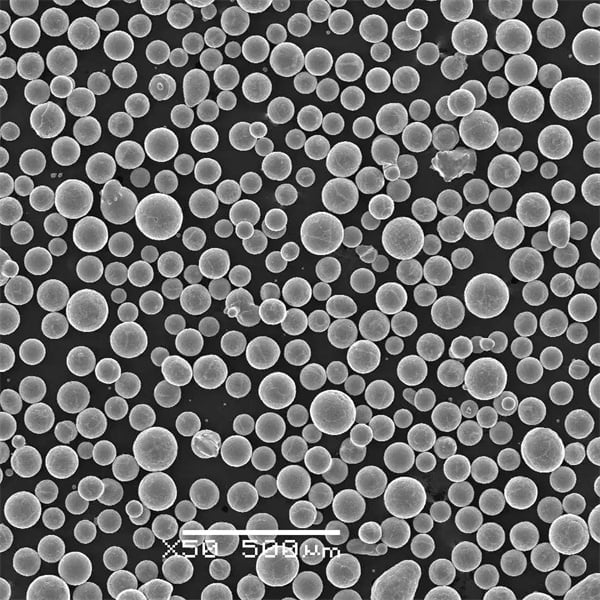
種類 溶射 金属粉
溶射に使用される金属粉末は、コーティングプロセスの成功に不可欠です。ここでは、広く使用されている10種類の金属粉末を紹介します:
1.アルミナ-チタニア(Al2O3-TiO2)粉末
アルミナとチタニアのブレンドであるこのパウダーは、優れた耐摩耗性と電気絶縁性で知られている。エレクトロニクス産業でよく使用される。
2.炭化クロム(Cr3C2)粉末
炭化クロム粉末は、その卓越した硬度と耐摩耗性、耐腐食性により、高温用途に最適です。
3.コバルトクロム(CoCr)粉末
コバルトクロム合金は、その高い耐摩耗性と靭性から好まれている。医療用インプラントや航空宇宙部品によく使用される。
4.ニッケルアルミニウム(NiAl)粉末
ニッケル・アルミニウム粉末は優れた接合特性で知られ、溶射用途のボンドコートとしてよく使用される。
5.炭化タングステン-コバルト(WC-Co)粉末
このパウダーは優れた硬度と耐摩耗性を持ち、過酷な摩耗条件に適している。
6.ステンレス鋼(316L)パウダー
316Lステンレス鋼粉は耐食性に優れ、船舶や医療機器など様々な用途に使用されている。
7.ジルコニア(ZrO2)粉末
ジルコニア粉末はその断熱特性のために使用され、一般的に遮熱コーティングに適用される。
8.モリブデン(Mo)粉末
モリブデン粉末は融点が高く、熱伝導性、電気伝導性に優れているため、様々な産業用途で使用されている。
9.銅(Cu)パウダー
銅粉はその電気伝導性と熱伝導性の特性から、エレクトロニクス産業で多く使用されている。
10.鉄(Fe)粉
鉄粉は、優れた耐摩耗性と磁気特性を必要とする用途に使用される。
の応用 溶射
溶射は幅広い産業分野で使用されています。ここでは、主な用途について詳しくご紹介します:
| 産業 | 申し込み | 説明 |
|---|---|---|
| 航空宇宙 | タービンブレード | 溶射はタービンブレードに遮熱性と耐摩耗性を与える。 |
| 自動車 | エンジン・コンポーネント | エンジン部品の耐摩耗性と寿命を向上させる。 |
| 石油・ガス | 掘削装置内。 | 過酷な環境での腐食や摩耗から保護します。 |
| メディカル | インプラント | インプラントの生体適合性と耐摩耗性を高めるコーティングに使用される。 |
| エレクトロニクス | 回路基板 | 導電性コーティングや熱管理ソリューションの提供。 |
| 発電 | ボイラー管 | 高温での腐食や侵食を防ぐ。 |
| 製造業 | 金型 | 表面硬度を向上させ、工具寿命を延ばす。 |
溶射の利点
溶射は、他のコーティング方法と比較して多くの利点があります。以下に詳細な比較を示します:
| メリット | 説明 |
|---|---|
| 汎用性 | 幅広い素材に使用可能。 |
| 費用対効果 | 部品の寿命を延ばす費用対効果の高いソリューションを提供します。 |
| パフォーマンス | 耐摩耗性、耐食性、耐熱性を向上させ、性能を強化。 |
| 柔軟性 | 様々な形状やサイズの部品に適しています。 |
| 効率性 | ダウンタイムを最小限に抑えた迅速なアプリケーションプロセス。 |
のデメリット 溶射
溶射はその利点にもかかわらず、いくつかの限界がある:
| デメリット | 説明 |
|---|---|
| 表面処理 | 効果的な接着には徹底した表面処理が必要。 |
| 設備費 | 溶射設備への初期投資が高い。 |
| 複雑さ | この工程は複雑で、熟練したオペレーターを必要とする。 |
| 厚さ制限 | 品質を損なうことなく、特定のコーティング厚さに限定。 |
仕様、サイズ、等級、規格
溶射材料とプロセスは、品質と性能を確保するために特定の規格と仕様を満たさなければなりません。以下はその詳細です:
| 素材 | スタンダード | グレード | サイズ |
|---|---|---|---|
| アルミナ・チタニア | ISO 14919 | 99% 純度 | 15-45 µm |
| 炭化クロム | ASTM B833 | 75-80% Cr3C2 | 10-45 µm |
| コバルト・クロム | AMS 5889 | CoCrW | 15-53 µm |
| ニッケル・アルミニウム | ISO 14920 | Ni5Al | 10-45 µm |
| 炭化タングステン-コバルト | ASTM B794 | WC-12Co | 15-45 µm |
| ステンレス鋼 | ISO 5832-1 | 316L | 15-53 µm |
| ジルコニア | ASTM F1598 | 8Y-ZrO2 | 15-53 µm |
| モリブデン | ASTM B387 | 99% 純度 | 15-53 µm |
| 銅 | ASTM B216 | 99% 純度 | 10-45 µm |
| 鉄 | ASTM B749 | フェ | 10-45 µm |
サプライヤーと価格詳細
高品質の溶射材料を入手するには、適切なサプライヤーを見つけることが重要です。以下に、いくつかの主要サプライヤーとその価格表を示します:
| サプライヤー | 素材 | 価格(kgあたり) | 所在地 |
|---|---|---|---|
| プラクセア | 炭化タングステン-コバルト | $100 | アメリカ |
| ヘガネス | ニッケル・アルミニウム | $60 | スウェーデン |
| メトコ | 炭化クロム | $80 | スイス |
| カーペンター | コバルト・クロム | $120 | アメリカ |
| エリコン | アルミナ・チタニア | $70 | スイス |
| ケナメタル | ステンレス鋼 | $50 | アメリカ |
| スタルクHC | ジルコニア | $90 | ドイツ |
| サンドビック | モリブデン | $85 | スウェーデン |
| テクナ | 銅 | $40 | カナダ |
| H.C.スタルク | 鉄 | $30 | ドイツ |
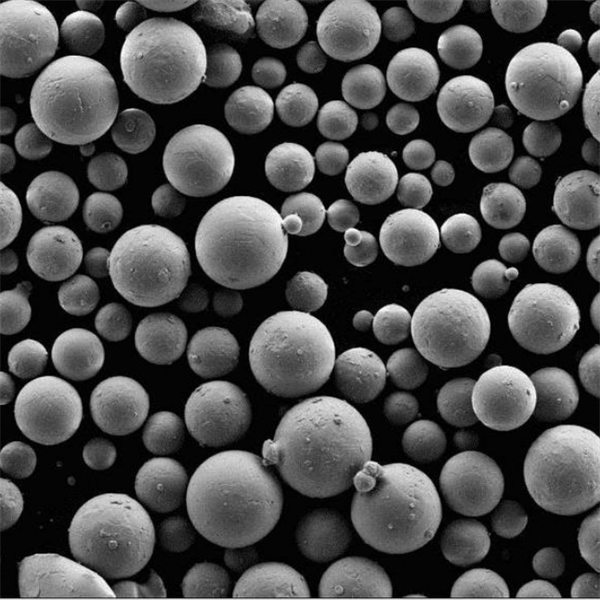
の長所と短所を比較する 溶射
コーティング工程を選択する際には、長所と短所を比較検討することが不可欠です。ここで比較してみよう:
| アスペクト | 長所 | 短所 |
|---|---|---|
| コスト | 大型部品のコスト効率 | 高いイニシャルコスト |
| 耐久性 | 優れた耐摩耗性と耐食性 | 表面処理が必要 |
| 汎用性 | 様々な素材や用途に対応 | 操作の複雑さ |
| 効率性 | 迅速なコーティングプロセス | 厚さの制限 |
よくあるご質問
Q1:溶射に使用できる材料は何ですか?
A1: 金属、セラミック、プラスチック、複合材など幅広い素材に対応。
Q2:溶射が最も恩恵を受ける産業は?
A2: 航空宇宙、自動車、石油・ガス、医療、エレクトロニクス、発電、製造。
Q3:溶射の主な利点は何ですか?
A3: 耐摩耗性、耐食性、断熱性、導電性が向上。
Q4:溶射の典型的な限界は何ですか?
A4: 表面処理が必要で、設備コストが高く、複雑で、厚さに制限がある。
Additional FAQs on Thermal Spraying
- Q: How do I choose between HVOF, plasma spraying, and cold spray for my application?
A: Match process to property needs: HVOF yields dense, low-oxide cermet coatings with high bond strength (wear/corrosion). Plasma spraying handles high-melting ceramics (thermal barriers, electrical insulation). Cold spray preserves feedstock properties with minimal oxidation, ideal for corrosion repair and electrically conductive, ductile metals. - Q: What surface preparation is best practice before thermal spraying?
A: Grit blast with angular alumina or alumina-silicate to achieve 3–5 mil (75–125 μm) Ra anchor profile, solvent clean to SSPC-SP1, and mask critical features. Verify roughness and cleanliness per ISO 8501/8503 or SSPC/NACE standards to ensure adhesion. - Q: How is coating quality verified after application?
A: Conduct adhesion per ASTM C633, porosity by image analysis (ASTM E2109), microhardness (ASTM E384), thickness by magnetic/eddy current (ASTM D7091) or metallography, and wear testing (ASTM G65/G99). For TBCs, perform thermal cycling/CMAS resistance tests. - Q: Can thermal sprayed coatings be machined or ground to tolerance?
A: Yes. Finish grind with diamond/CBN wheels for carbides and ceramics using flood coolant; finish turn/OD grind for metallics. Leave machining allowance (typically 0.1–0.3 mm) and validate residual stress to avoid cracking. - Q: What are typical bond strengths for common thermal spray systems?
A: HVOF WC–Co/Cr: 60–80 MPa; plasma-sprayed alumina: 15–30 MPa (with bond coat); cold-sprayed aluminum/copper: 30–70 MPa; arc-sprayed steels: 10–25 MPa. Actual values depend on substrate, bond coat, and preparation.
2025 Industry Trends in Thermal Spraying
- Sustainability focus: more hydrogen-fueled HVOF/plasma systems and closed-loop dust/overspray recovery; documented Scope 3 reductions in coating supply chains.
- Digital qualification: inline plume/melt-jet monitoring, torch telemetry, and AI-based process window management tied to ISO 14922 quality plans.
- Cold spray scale-up: expanded structural repair for aerospace/defense and copper/aluminum busbar coatings for EVs due to low heat input.
- Hybrid stacks: bond coats via HVOF, top coats via suspension plasma spray (SPS) for finer microstructures and higher thermal cycling life.
- Standards refresh: wider adoption of ISO 14922 (quality requirements), ISO 2063-1/2 (zinc/aluminum thermal spraying for corrosion), and updates aligning with aerospace AMS 2447/2448.
2025 Snapshot: Performance, Economics, and Adoption
| Metric (2025) | 値/範囲 | Notes/Source |
|---|---|---|
| Global thermal spray market size | $13–15B | MarketWatch/Wohlers syntheses; includes equipment, materials, services |
| HVOF WC–Co coating porosity | 0.5–2.0% | Typical with optimized parameters and fresh powder (ISO 14919 feedstock) |
| Plasma-sprayed YSZ TBC cyclic life | 1,000–2,500 cycles | Furnace thermal cycling, depends on bond coat and SPS vs APS routes |
| Cold spray deposition efficiency (Cu/Al) | 60–90% | High DE for ductile metals; minimal oxidation |
| Typical operating cost change vs 2023 | −5% to −10% | From gas recovery, hydrogen blends, and improved gun maintenance |
| EV/energy sector coating demand growth | +15–20% YoY | Busbars, battery tooling, turbine/hydrogen components |
Key references:
- ISO 14919, ISO 14922, ISO 2063-1/2 (www.iso.org)
- ASM Handbook, Vol. 5: Surface Engineering (www.asminternational.org)
- NACE/AMPP corrosion guidance for sprayed metallic coatings (www.ampp.org)
- OEM technical bulletins from Oerlikon Metco, Praxair/TAFA, and TST Systems
Latest Research Cases
Case Study 1: Hydrogen-Assisted HVOF for WC–CoCr Wear Coatings (2025)
Background: A mining OEM sought to lower CO2 footprint and improve deposition efficiency on pump sleeves while maintaining wear resistance.
Solution: Implemented H2-enriched fuel mix with closed-loop oxygen control; optimized powder feed for 15–45 μm WC–10Co4Cr per ISO 14919; inline plume monitoring to stabilize particle temperature/velocity.
Results: 1.2% average porosity, +8% bond strength vs baseline kerosene HVOF, 12% lower specific fuel consumption, and 18% reduction in estimated CO2e per m² coated. Abrasion loss (ASTM G65 Proc. A) improved by 10%.
Case Study 2: Suspension Plasma Spray (SPS) YSZ–Gd2Zr2O7 Dual-Layer TBCs (2024)
Background: Aerospace engine MRO aimed to boost thermal cycling life on hot-section components.
Solution: APS NiCrAlY bond coat followed by SPS fine-columnar YSZ and gadolinium zirconate top layers; particle diagnostics tuned for narrow temperature distribution.
Results: 35% longer thermal cycling life vs conventional APS YSZ, 0.2–0.4 W/m·K lower thermal conductivity, and reduced spallation in burner rig tests. Maintained thickness tolerance ±50 μm after finish grind. Data aligned with OEM acceptance criteria and ISO 14922 quality documentation.
専門家の意見
- Dr. Christian M. Gourlaouen, Global Head of Technology, Oerlikon Metco: “Process-embedded sensing and digital twins are redefining thermal spraying—parameter drift can be caught in seconds, which is crucial for aerospace-grade coatings.” (www.oerlikon.com/metco)
- Prof. Sanjay Sampath, Director Emeritus, Center for Thermal Spray Research, Stony Brook University: “Microstructure control—especially via SPS and solution precursor plasma spray—delivers step-changes in thermal barrier performance at industrial scale.” (www.stonybrook.edu)
- Dr. Victor Champagne, Senior Scientist, U.S. Army CCDC (Cold Spray pioneer): “Cold spray is transitioning from repair to production, offering structural, low-oxide deposits that are difficult to achieve with high-temperature routes.” (asc.army.mil profiles; peer-reviewed publications)
Practical Tools and Resources
- ISO/ASTM standards: ISO 14919 (feedstock), ISO 14922 (quality requirements), ISO 2063 (zinc/aluminum spray), ASTM C633 (adhesion), ASTM E2109 (image analysis for porosity)
- ASM Handbook, Volume 5: Surface Engineering – comprehensive property/process data
- NIST Thermal Spray Roadmap and data repositories (www.nist.gov)
- AMPP/NACE corrosion protection standards for sprayed metallic coatings (www.ampp.org)
- OEM application notes and material datasheets: Oerlikon Metco, Praxair/TAFA, Kennametal, Höganäs
- Process monitoring solutions: in-situ plume/particle diagnostics from Tecnar DPV/AccuraSpray, and vision-based monitoring from third-party integrators
- Costing calculators and job planning: industry spreadsheets from OEMs and trade groups; consult AMBF/CTSR resources for DoE templates
Last updated: 2025-10-14
Changelog: Added 5 new FAQs tailored to process selection, prep, QA, finishing, and bond strength; included 2025 trend analysis with data table; summarized two recent case studies (H2-assisted HVOF and SPS dual-layer TBCs); provided expert opinions with affiliations; compiled standards and tools/resources with authoritative sources.
Next review date & triggers: 2026-04-15 or earlier if ISO/ASTM standards are revised, major OEMs release new HVOF/SPS guns or powders, or hydrogen infrastructure guidance changes process economics by >10%.
シェアする
MET3DP Technology Co., LTDは、中国青島に本社を置く積層造形ソリューションのリーディングプロバイダーです。弊社は3Dプリンティング装置と工業用途の高性能金属粉末を専門としています。
関連記事
